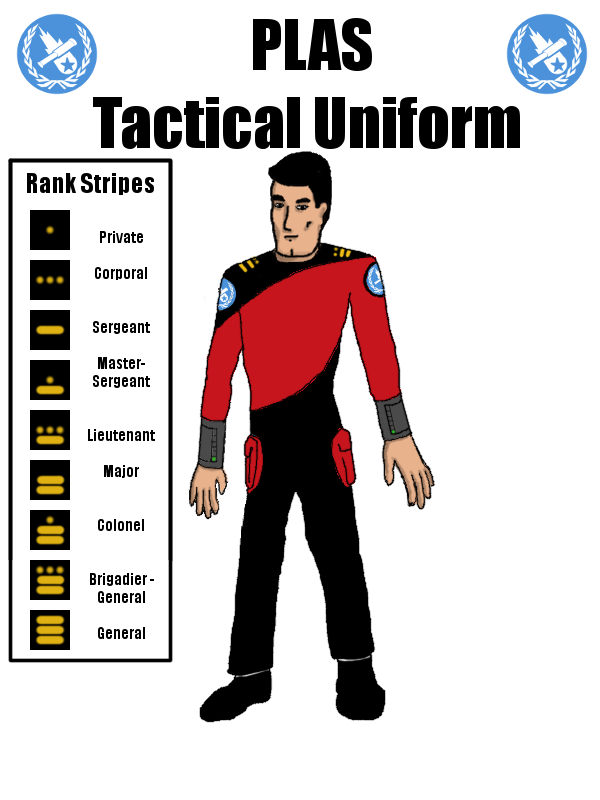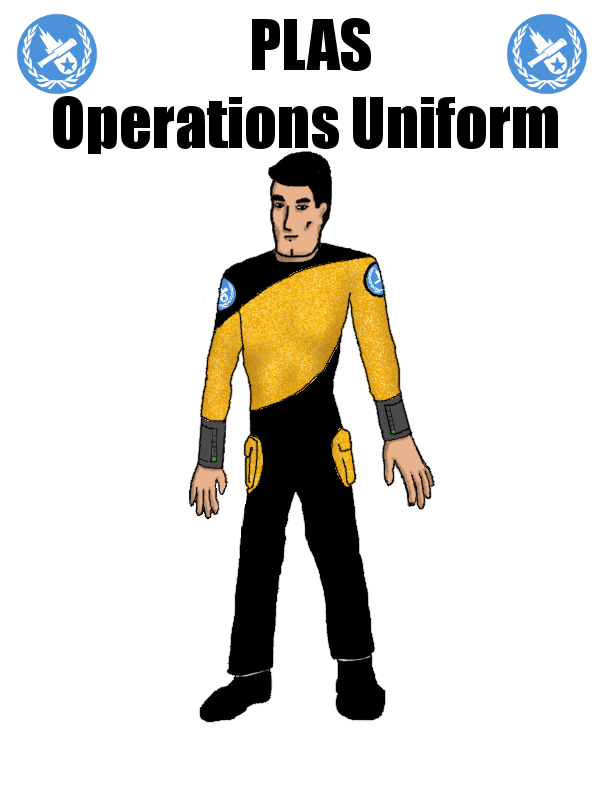History
The Planetary League Astrophysical Survey was founded in GSC 3, as the Planetary League was setting up to fully explore and inhabit the Solar system. The PLAS continued to explore and discover throughout the history of the Planetary League, with most of the remnants joining the Galactic Republic after the Great Reckoning.
Organization
The PLAS performed three basic types of mission:
Scout Missions generally consisted of a lone explorer in a fully automated ship, assisted by a crew of robots and an array of probes, exploring uncharted space.
Survey Missions had a small crew, usually 5-10 explorers including a handful of experts in different fields. Surveys would go into areas already explored by scouts in order to collect more detailed information, and possibly return some samples.
Expeditions were large missions, undertaken on capitol-sized ships with a crew of hundreds or thousands to do thorough, detailed study. Expeditions would often set up outposts in the areas they were studying, and frequently, a contingent of Tardigrades would go along to set up an outpost if the area showed potential for future development.
The PLAS was divided into five main branches, and with the exception of scouting missions, each mission would have at least one representative of each branch. The branches were (in descending order of power and prestige) Command, Tactical, Science, Operations and Logistics.
Command
The Command branch was ultimately responsible for the success of each mission, giving orders and coordinating the activities of the other branches. Because the PLAS was nominally a civilian agency, the command branch had an abbreviated set of ranks, consisting of only these nine: Cadet, Ensign, Lieutenant, Lieutenant-Commander, Commander, Captain, Commodore, Vice-Admiral, and Admiral. Most missions consisted of a single ship, so officers above the rank of Captain rarely saw any field duty. Occasionally a particularly large expedition with multiple ships would be led by a Commodore.
The chest, arms and holsters on the Command uniform were made of a smart fabric that would continually animate the star field to gradually shift over time. The right holster was typically used for a sidearm, while the left was generally used as pocket space for personal effects. The armbands contained versatile computer interfaces.
Tactical
The Tactical branch was responsible for defending the mission from threats and enemies both external and internal. From fighting battles with hostile alien forces, to throwing unruly crew-members in the brig, the Tactical branch protected the PLAS and its mission. The Tactical branch, like the Command branch, had an abbreviated rank structure, consisting of nine ranks: Private, Corporal, Sergeant, Master-Sergeant, Lieutenant, Major, Colonel, Brigadier-General, and General. Because the PLAS rarely sent expeditions of more than one ship, Tactical officers above the rank of Major were only rarely deployed.
The holsters on the Tactical uniform were used for sidearms and other tactical equipment. The entire uniform was made from a nano-engineered cloth that could harden on impact into fairly sturdy armor. The armbands were made of laminated plastanium, and were connected to a dedicated command and control network.
Science
The Science branch was responsible for the primary mission of the PLAS, to explore and discover the galaxy and its inhabitants. Scientists of nearly every discipline joined the PLAS in order to advance their fields, and their service was frequently rewarded, as the PLAS continually discovered new planets, life-forms, and even civilizations.
The arms and chest of the Science uniform contained a sophisticated electronic interface that could be used to connect the scientist's implanted neural interface to external sensors and equipment. The armbands contained sensors and data recorders, and the uniform's holsters were often converted to function as sample containers.
Operations
The Operations branch was responsible for engineering, maintenance, and generally keeping things running. In addition to engineering and maintenance, Operations also covered a number of other routine tasks, such as operating life support systems, hydroponics, cooking, and cleaning. Most medical staff (Nurses, Orderlies, and M.D.s) were considered part of the operations branch.
The arms and chest of the Operations uniform were made of an attractive, sparkly gold fabric engineered to repel dirt and stains. The holsters were generally used for personal effects, or the storage of small hand-tools, these would often be augmented with an external tool-belt for maintenance or engineering work. The armbands contained limited computer interfaces, one for personal use, and another for work assignments.
Logistics
The Logistics branch was responsible for keeping the mission supplied. Logistics personnel spent much of their time controlling the flow of supplies, making deliveries, and taking inventory. Very few life-forms served in this branch, as most of the work was typically done by robots.
The arms and chest of the Logistics uniform were green. The armbands contained a tracking device as well as a limited computer interface that could give work assignments. The holsters were used for storing manifests or small parcels.
Scouts
Scouts were technically part of the Command branch, but because they explored alone, were expected to have some training and experience in the duties of all the branches. Since they worked alone, scouts were utterly dependent on robots and AI to take care of their needs, and knowledge in these areas was considered vital to the scout's mission.
Rex Warburton, space scout. The Scout uniform was the most versatile and capable of any in the PLAS, containing numerous technologies to aid the scouts in their missions.
Notable Explorers
Ichigo Berwynne was a scout, he discovered Berwynne's Rift, and the Berwynne system at the other end. After this discovery, he retired from the PLAS to become governor of the Planetary League colony on Berwynne's Reach.
Zoe Bonnard was a flamboyant and prolific explorer. She rose up the ranks quickly, starting as a scout, and eventually leading many successful expedition missions. Discovered Bonnard's World, Shoji, and Bonnard's End, among many others.
Print this image for paper figures suitable for use as game pieces.











